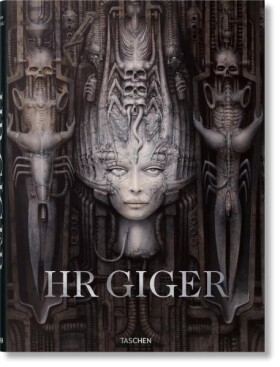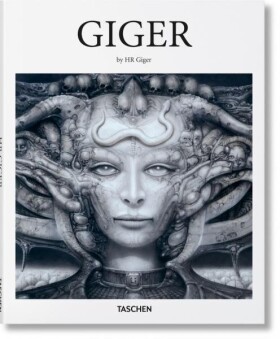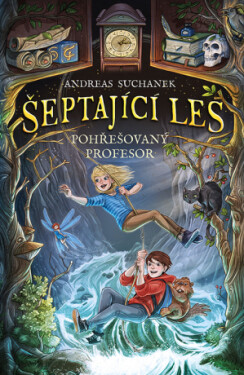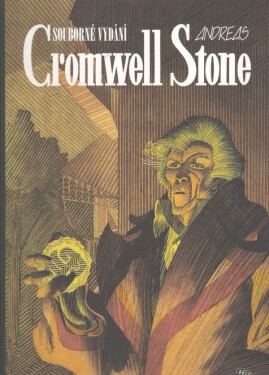Na této adrese není žádný obsah. Pravděpodobně je adresa chybná. Pokusili jsme se najít stránky, které by mohly být podobné. Vyberte si z nich. Nevyberete-li si, pokračujte na hlavní stránku, prosím.
 HR Giger Andreas Hirsch
3 791 Kč
od 2 obchodů
HR Giger Andreas Hirsch
3 791 Kč
od 2 obchodů
 Giger Giger
383 Kč
od 2 obchodů
Giger Giger
383 Kč
od 2 obchodů
 Stíny světa - Izquierdo Andreas - e-kniha
349 Kč
od Knihydobrovsky.cz
Stíny světa - Izquierdo Andreas - e-kniha
349 Kč
od Knihydobrovsky.cz
 Paradigmatika spisovné ruštiny - Markus Giger, Ľubomír Ďurovič - e-kniha
270 Kč
od Knihydobrovsky.cz
Paradigmatika spisovné ruštiny - Markus Giger, Ľubomír Ďurovič - e-kniha
270 Kč
od Knihydobrovsky.cz
 Pragmatika v češtině - Milada Hirschová - e-kniha
250 Kč
od Knihydobrovsky.cz
Pragmatika v češtině - Milada Hirschová - e-kniha
250 Kč
od Knihydobrovsky.cz
 Agent Kolbe - Andreas Kollender e-kniha
249 Kč
od Kosmas.cz
Agent Kolbe - Andreas Kollender e-kniha
249 Kč
od Kosmas.cz
 Vídeňské zločiny II - Andreas Pittler - audiokniha
290 Kč
od Knihydobrovsky.cz
Vídeňské zločiny II - Andreas Pittler - audiokniha
290 Kč
od Knihydobrovsky.cz
 Bláta! Andreas Weber
241 Kč
od 3 obchodů
Bláta! Andreas Weber
241 Kč
od 3 obchodů
 Agent Kolbe - Andreas Kollender - e-kniha
249 Kč
od Knihydobrovsky.cz
Agent Kolbe - Andreas Kollender - e-kniha
249 Kč
od Knihydobrovsky.cz
 Vídeňské zločiny I. - Andreas Pittler - audiokniha
290 Kč
od Knihydobrovsky.cz
Vídeňské zločiny I. - Andreas Pittler - audiokniha
290 Kč
od Knihydobrovsky.cz
 Vražedné pohádky - Andreas Gruber - e-kniha
349 Kč
od Knihydobrovsky.cz
Vražedné pohádky - Andreas Gruber - e-kniha
349 Kč
od Knihydobrovsky.cz
 Pohřešovaný profesor - Andreas Suchanek - e-kniha
249 Kč
od Knihydobrovsky.cz
Pohřešovaný profesor - Andreas Suchanek - e-kniha
249 Kč
od Knihydobrovsky.cz
 Vražedný rej - Andreas Gruber - e-kniha
439 Kč
od Knihydobrovsky.cz
Vražedný rej - Andreas Gruber - e-kniha
439 Kč
od Knihydobrovsky.cz
 Vražedné znamení - Andreas Gruber - e-kniha
399 Kč
od Knihydobrovsky.cz
Vražedné znamení - Andreas Gruber - e-kniha
399 Kč
od Knihydobrovsky.cz
 Střední, jižní východní Evropa rok 1918: společenské mezinárodní souvislosti Markus Giger,
131 Kč
od 3 obchodů
Střední, jižní východní Evropa rok 1918: společenské mezinárodní souvislosti Markus Giger,
131 Kč
od 3 obchodů
 Cromwell Stone Andreas
355 Kč
od 3 obchodů
Cromwell Stone Andreas
355 Kč
od 3 obchodů
 Šeptající les: Dobrodružství začíná - Andreas Suchanek - e-kniha
249 Kč
od Knihydobrovsky.cz
Šeptající les: Dobrodružství začíná - Andreas Suchanek - e-kniha
249 Kč
od Knihydobrovsky.cz
 Veľký atlas rýb - Andreas Janitzki
348 Kč
od Knihydobrovsky.cz
Veľký atlas rýb - Andreas Janitzki
348 Kč
od Knihydobrovsky.cz
 Jak zklidnit splašenou mysl - Andreas Knuf - e-kniha
195 Kč
od Knihydobrovsky.cz
Jak zklidnit splašenou mysl - Andreas Knuf - e-kniha
195 Kč
od Knihydobrovsky.cz
 Bojovník ve Vatikánu - Andreas Englisch - e-kniha
339 Kč
od Knihydobrovsky.cz
Bojovník ve Vatikánu - Andreas Englisch - e-kniha
339 Kč
od Knihydobrovsky.cz
 Šeptající les: Portál času - Andreas Suchanek - e-kniha
249 Kč
od Knihydobrovsky.cz
Šeptající les: Portál času - Andreas Suchanek - e-kniha
249 Kč
od Knihydobrovsky.cz
 Stíny světa Andreas Izquierdo
89 Kč
od Kosmas.cz
Stíny světa Andreas Izquierdo
89 Kč
od Kosmas.cz
 Česká věta na rozhraní mezi gramatikou a pragmatikou - Milada Hirschová - e-kniha
150 Kč
od Knihydobrovsky.cz
Česká věta na rozhraní mezi gramatikou a pragmatikou - Milada Hirschová - e-kniha
150 Kč
od Knihydobrovsky.cz